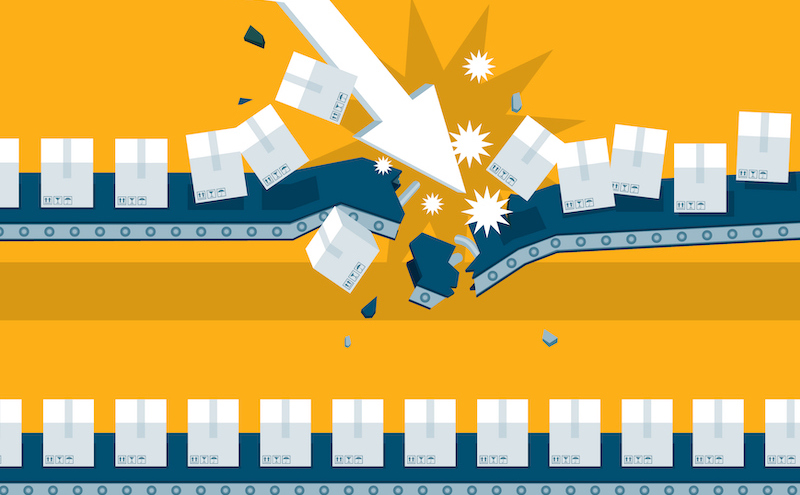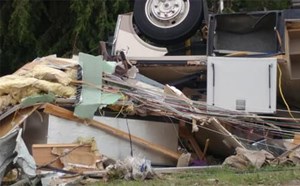
Supply Chain Challenges, Coordination, and the DASH Tool
John L Hick, MD, FACEP
Shortages of radiologic contrast materials, normal saline, N95 masks, even aspirin. Shortages of a frequency and intensity that were once unthinkable. Hospital pharmacies now routinely assign up to a full-time person to find solutions and implement alternative ordering and administration. Often, it is possible to find substitute products, though frequently at budget-busting prices. Sometimes, patients and providers suffer the consequences of these shortages.
The ‘supply chain’ is a complex web, with raw materials often sourced from multiple countries, manufactured in a few locations to finished product, shipped by vulnerable means, with demand and end-use affected by multiple variables. Quickly summarized, there are manufacturing issues, distribution issues, user issues, and regulatory issues. These domains and their vulnerabilities are explored in more detail in an ASPR TRACIE document ‘Partnering with the Healthcare Supply Chain During Disasters’.
Healthcare and public health have little control over raw material and manufacturing vulnerabilities though they can advocate for policy changes and more direct control of production and distribution (for example some healthcare systems are now manufacturing a limited range of pharmaceuticals). Sometimes, shortages and production interruptions can be anticipated but their impact can vary widely (interruption of lithium / rare earth supply, COVID-19 absenteeism effects on overseas factories).
On the distributor side, healthcare systems and hospitals should understand the specifics of their contracts, use multiple vendors (and manufacturing sources – over-reliance on 3M 1860 N95 respirators led to major problems during the pandemic), and understand when a product does go into shortage how the distribution allocation policies work (e.g. will the distributor ship a percentage of usual orders?) Sometimes, large group purchasing organization (GPO) or healthcare system will have national or regional preferred contracts that guarantee it an out-sized percentage of available product during shortages, affecting distribution to others. However, diversity of products and contractors is a constant struggle as it is at odds with streamlining ordering and obtaining purchase discounts.
Healthcare systems and hospitals should recognize their distributor resources and vulnerabilities. Knowing the location of warehouses, and roughly what products and quantities are available can be extremely helpful, as can recognizing specific hazards that may interfere with delivery (e.g. sole road access is via a bridge subject to flooding).
Understanding what supplies and quantities should be available at the hospital for a range of mass casualty, burn, or infectious disease events can help prevent initial shortfalls. The recently released (and free) Disaster Available Supplies in Hospitals (DASH) tool from ASPR TRACIE and Healthcare Ready (www.dashtool.org) can help a hospital understand resources that should be ‘on the shelf’. These recommendations can also drive conversations with vendors about ‘pushing’ additional resources depending on incident scope and with healthcare coalitions and jurisdictional partners about the need for cached materials to supplement facility-available resources. Understanding the tool’s assumptions, including the predicted number of casualties for the facility size and role, can help both coalition and jurisdictional partners know the threshold when help may be needed.
When a shortage occurs that cannot be mitigated a regional communication and collaboration structure such as a healthcare coalition must be in place to share information, best coping practices, and potentially broker or allocate scarce resources. These regional capabilities ensure consistency of both conservation and rationing practices, thus improving fairness, accountability, and equity of access for patients and providers. Unfortunately, few of these situations are ‘disasters’ and thus little legal or regulatory protection or resources from the state can be expected.
In some cases, national specialty societies will offer guidance for rationing, which can be extremely helpful. Regulatory agencies such as the Food and Drug Administration may provide some relief or may license additional products. However, there is no substitute for local communication and coordination. The more that these shortages are managed as ‘incidents’ and subject to the same policy and process as disaster crisis standards of care rationing processes the more thoughtful and fair the solutions are likely to be.
As disaster planners, we tend to plan for excess demand, but we also need better understanding of our current resources and our supply chain options to provide a buffer against shortage issues that may equally contribute to disability and death. The systems and expertise that we have available at a facility and regional level can and should be leveraged to provide equitable access to scarce resources during supply shortages just as we do when a mass casualty event occurs.
John L Hick, MD is a Professor of Emergency Medicine at University of Minnesota and Medical Director for Emergency Preparedness at Hennepin Healthcare. He serves HHS/ASPR as the Lead Editor of the TRACIE medical preparedness website (asprtracie.hhs.gov).
The views expressed in this article are those of the author and do not represent official policy or views of US HHS, the University of MN, or Hennepin Healthcare.



